 Facebook
Facebook
 X
X
 Instagram
Instagram
 TikTok
TikTok
 Youtube
Youtube
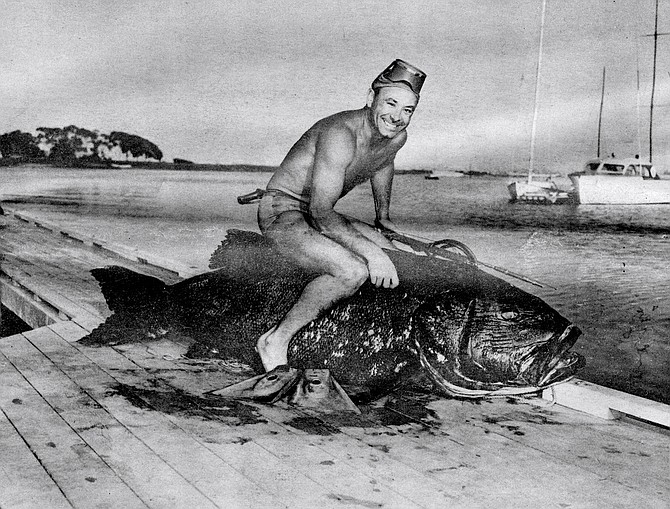

So much of identity is memory. There’s experience; maybe we chase it, maybe it just washes over us. But memory is what makes experience stick, what makes an anybody slipping through life into a somebody who has lived. And it’s what makes San Diego more than a sprawling no-place with a beach and a zoo and an excess of sunshine. I work a few steps away from the Reader archives: 260 square feet of wallspace occupied by rows of black cardboard office drawers nestled into a steel framework, each one labeled with a date. The first reads simply: 1972. The first cover feature, “South of Bdwy,” published October 5, 1972, is by John Milton (!) and begins, “The city, only a few years ago, only wanted to expand Horton Plaza. You know Horton Plaza, south of Broadway, across from Westgate Plaza, San Diego’s Hyde Park: Hare Krishna...black-and-white fundamentalists...the pitifully inebriated...” Over the 50 years that followed, the Reader told the San Diego stories that helped to form San Diego’s story. That wall of drawers is more than an archive; it’s a storehouse of memory — the identity of a city, the answer to the question, “What’s San Diego like?” Over the next four weeks, we’ll be running brief excerpts from just a few of those stories, selected by the paper’s founder and owner, Jim Holman. Links to the full pieces are online. — Matthew Lickona
Mood on campus 11.23.72
"I just said I hope Proposition 19 — marijuana — passes."
"Yeah, I do too. But I don't think it stands a chance."
"I'd rather have it win than McGovern."
"Well, I'd rather have it win in California than McGovern, if McGovern's going to lose nationally.... Thing is if Nixon wins, we're all going to need marijuana for the next four years."
Morale seemed so high 12.14.72 Ralph Jackson
A human relations group had been on the Kitty Hawk since the beginning of the cruise, and their rap sessions had been televised all over the ship. A black chief petty officer in Mark’s division had scoffed at the militant blacks and their comments in the television sessions. And when the chief’s black sailors began knotting, braiding their hair, he chewed them out royally..
Seals 4.12.73 Carlos Bey
"We all lived in conclaves, usually in houses in Coronado. Some of us live in the Sharp Mansion. You know, the guy the hospital's named after. He founded KFSD. We used to have the wildest parties. I remember one back in 1968. We sent out 500 invitations, bought kegs and kegs of beer, and 60 chocolate pies. The first six people in the pie-eating contest started to eat their pies but then picked them up and threw them at the crowd.”

This is the elephant’s grave, you know 6.21.73 Connie Bruck
Johnston, who is now 77 years old and has owned this place for close to 50 years, points to a picture taken in 1945. It shows the Hollywood Theater… “During the war, this place was really jumping," reminisces Johnston. “Remember, there was no El Cajon, no National City, no Chula Vista. So when the sailors got off the ships, they all came here."
The whole area was the city dump 8.16.73 Connie Bruck
The doctor tells me that on the economic ladder of Tijuana, San Martin ranks just slightly higher than the poorest, Cartolandia, where houses are made of cardboard; here.
The Body Shop 5.30.74 Connie Bruck
Laura finds several aspects of the Body Shop unusual, and appealing. Dancing and cocktail-waitressing, for one. "These eyes come in and play voyeur watching you dance, but then, when you come off the stage and serve them drinks, they relate to you in a much more human way.”
From bouncing to hooting to playing the road 7.18.74 Lou Curtiss
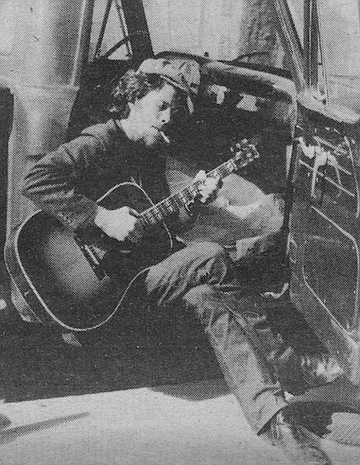
Tom Waits: "I started with Bobby Dylan songs. I was trying to learn some more tunes, more traditional vein, to be able to sit in at the Heritage in Mission Beach a little better. I was doing Mississippi John Hurt and that sort of thing."
Early years of San Diego rowing 5.8.75 John Martin
Probably the biggest attraction of the Rowing Club is its anachronism. The wooden floors, the knotty pine walls, the wooden lockers next to the gym room. The sign of the sunporch that warns, “Members Must Wear Full-Length Trunks On The Island.” The bare lightbulbs hanging from the ceiling, the comb that hangs on a chain next to the mirror in the locker room.
The poets of San Diego 2.20.75 Michael Davidson
One of the mediating factors between San Diego and an active poetry scene is geographic. New York is an island. San Francisco is a peninsula thrusting up into cold waters, Paris is a city built on a grid of concentric circles. Beyond San Diego is more San Diego... or Los Angeles. The tissue of freeways and boulevards.
Stories of San Diego’s Chinatown 2.6.75 Carlos Bey
When work on the railroads became scarce, many of the San Diego Chinese turned to fishing. There were eight or ten junks that regularly supplied San Diego with fresh fish. The fishermen also sent abalone and dried fish to China and sea shells to Austria and Hungary for the button industry.
Surrender at Milepost 45 10.30.75 Tom Raab
I, a beaten, dejected, frustrated cross-country bicycle rider, was calling it quits. What had begun as a five-week, 2300-mile solo bicycle trip from Pacific Beach to Milwaukee, Wisconsin was ending after only 3-1/2 days at milepost 45 on Arizona’s Interstate 10 — 106 miles west of Phoenix.
Swami’s 4.22.76 Steve Sorensen
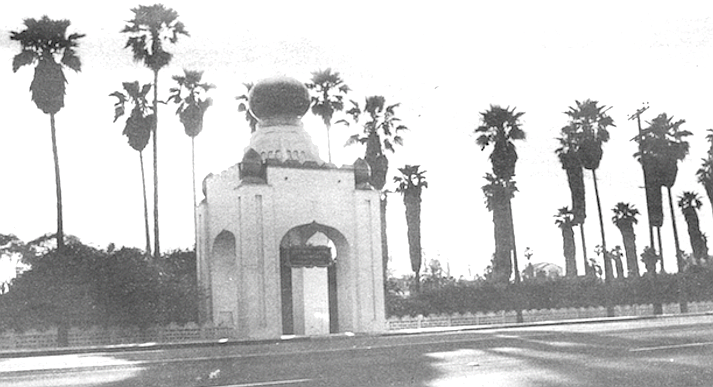
To the surfers, the Self-Realization Fellowship temple is a landmark. Its glistening white walls and gold, lotus-blossom archway serve as a marker for their playground below—one of the finest point-breaks in California—“Swami’s.”
Lost in Logan Heights 3.11.76 Steve Esmedina
Tuesday, June 6, 1972. A muggy pre-summer night in San Diego, the kind that sends people scurrying to the beaches for relief. Campfire, tobacco, and marijuana smoke blankets the picnic area of South Mission Beach. Rumbling motors. shouting voices, popping beer lids, and Marvin Gaye’s “What’s Goin' On?” emanate from the beach parking lot.
A kingdom bought and sold 12.9.76 Steve Sorensen
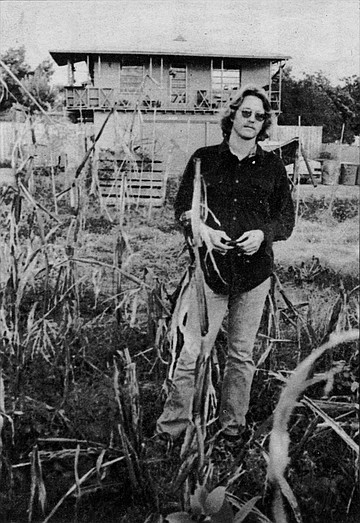
On Third Street in Encinitas, just up the hill from Moonlight Beach, there’s a pair of low-rent triplexes facing each other. They were built at about the same time from flip-flopped blueprints so that one is the mirror image of the other.
A separate peace 2.3.77 Connie Bruck
I’d never spoken to a nun in my life. All I remembered of them from childhood was that my mother always insisted that seeing a lone “sister” was bad luck; and my Catholic friends had learned from their nuns that 1) I was responsible for the killing of Christ, and 2) my soul was lost — which produced in the more zealous of them a faint, nagging itch for my conversion.
How San Diego took care of its Wobblies 3.10.77 David Helvarg
On March 10, 1912, 5000 people gathered in front of the San Diego city jail at Broadway and Front Street to demand an end to the ban on public speaking and better treatment for the free speech prisoners already locked away. The police called in the fire department to disperse the crowd with 150-pound pressure hoses.
Survivors 4.21.77 David Helvarg
"When these reservations were established, it was on land they thought they would never use," Romero says, "so they gave it to the Indians. Now with the development, with the modern roads and transport, these areas have become prime locations.”
War stories 10-20-77 David Helvarg
For Allan Koba and his family it would be more than three years before they’d see their Coronado home again. Like thousands of others, the Kobas were feeling the effects of executive order 9066, the World War II presidential decree that allowed for the internment of 110,000 United States residents, two-thirds of them native-born Americans.
Chairman of the boards 1.19.78 Steve Sorensen
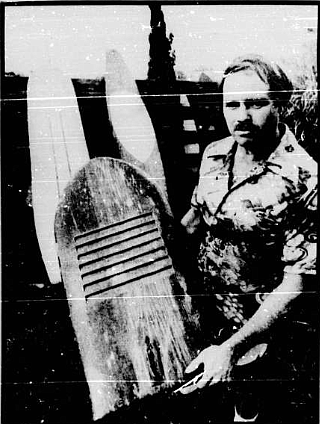
"I started reading about the old-timers — Duke Kahanamoku, Tom Blake, Joe Quigg — and about the huge planks they rode. I guess I realized that something as large as those old boards doesn't just disappear, but I had no idea they were lying around in people's garages.”
When men went under water 3.30.78 Neal Matthews
Bottom Scratchers saw forty-pound halibut and fifteen-pound lobster a few yards off the beach. Modern divers must travel as far as one hundred miles west, to San Clemente Island, to find comparable marine life and water. Until well after WWII, wetsuits were unheard of.
The little world that almost was 4.20.78 Merton Gudette
Katherine Tingley called an International Theosophical convention to Point Loma in 1899. Among those in attendance was Iverson Harris, eighty-eight years old. Harris, now living in Pacific Beach, exudes a restrained, Victorian charm as he recalls his first meeting with Katherine Tingley and his move to Point Loma.
Did somebody call a cab? 5.18.78 Joe Applegate
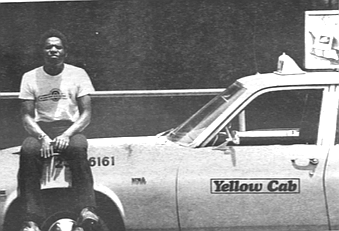
There is only one Easy Street in San Diego and Pierre Taheri, ace cab driver, doesn't know where it is. He knows the tourist bars and the Navy gates and the Travolator Hotel where the flight crews for National Airlines stay. Taheri knows what it's like to be thrown into his windshield at two in the morning.
Cast a cold eye on heaven 5.11.78 Jeannette DeWyze
The concept of building the world's biggest telescope on Palomar Mountain was born when Alfred Einstein sailed into San Diego Bay in 1931. Officials from the California Institute of Technology drove down from Pasadena to greet the father of relativity, and while here, they eyed the North County mountain for the first time.
Pecking order 5.25.78 Steve Sorensen
Just across the Colorado River from Blythe, less than a mile into Arizona, there’s a big corrugated tin shed at the end of a dusty gravel road. Across the front of this shed and on this hazy spring morning, every reputable cockfighter within three hundred miles of the Colorado has come to pit his seven best birds in the Ehrenberg Derby.
Slow fall from Foxhill 7.6.78 Eleanor Widmer
While Michael Copley was at Fort Ord he heard that his father had been admitted to Scripps Clinic. He called Helen to ask about him, but Helen, he says, was uncooperative. "She said, ‘You can't see your father; he's too sick.' I was very upset because I was his son, so I called Dr. Keeney, and he said, ‘Of course you can see your father.' “
Less is Morey 8.24.78 Gordon Smith

Tom Morey grew up in Laguna Beach, and like a lot of kids on the California coast his main interests were music and surfing. In the early 1960s he and a friend, Carl Pope, collaborated on a custom surfboard design and went into the manufacturing business in Ventura.
The forests below 11.9.78 Manny Ramos
San Diego is the kelp capital of the world. For many, especially local beachgoers, boaters, fishermen, and seaside residents who are all too familiar with the long, brown, rubbery, leafy strands of kelp, this is a somewhat dubious distinction.
River run 10.26.78 Steve Sorensen
I have decided that if there is any true wilderness left in San Diego County it will probably be found on the San Diego River between the Santa Ysabel Valley and the El Capitan Reservoir. I’ve never been there before, and don’t know anyone who has. I prefer it that way, because now I will have the pleasure of finding out for myself what’s out there.
Don’t call me at home 3.8.79 Jeannette DeWyze
Mayor Maureen O'Connor now guards her private life with remarkable jealousy. In the course of preparing this story I wasn’t invited to her home, she wouldn't introduce me to her husband, and she warned me that she would flatly refuse to answer many questions.
Stout hearts and salt water 4.12.79 Steve Sorensen
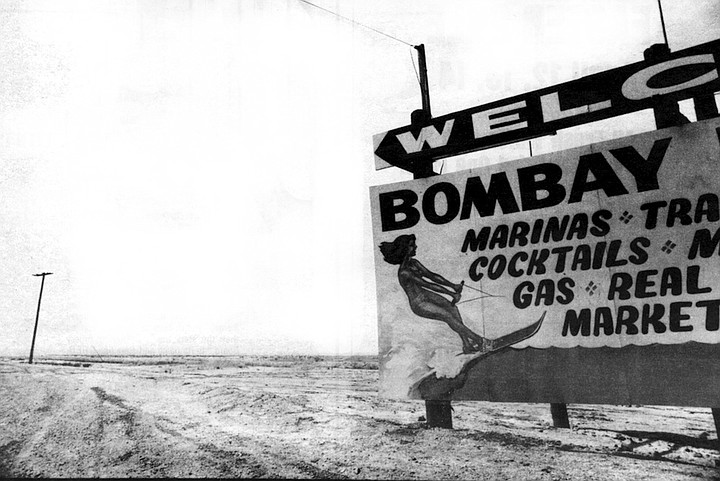
It was a catastrophe that created the Salton Sea itself, just as it was a series of catastrophes that created and destroyed the ancient lakes that existed where the modem lake now lies. Bounded on the east by the San Andreas Fault, and about forty miles to the west by the San Jacinto Fault, the gaunt desert between has sunk to more than 260 feet below sea level.
The last re-write 9.27.79 Bob Dorn
For years, both local Copley papers were edited and supervised by men like Lt. General V.H. “Brute” Krulak and Captain “Andy” Anderson, fussbudget retired Marine and Navy brass who were capable of issuing orders that stories on anti-war protests refer to the people in the streets as “hooligans.”
Two-dollar tour 10.18.79 Steve Esmedina

When I accepted the invitation to accompany the Penetrators on their six-day junket up the California coast, I realized I could not expect the comforts that might be afforded a Rolling Stone writer. Warnings from loved ones were abundant. My mother urged me to bring ample provisions.
For big kids only 11.1.79 Neal Matthews
“Well, we started out at the Brass Rail with two yellow school-bus loads of OMBAC members,” Daly begins, a rising crest of snickers acknowledging the Brass Rail’s reputation as a gay bar in Hillcrest. They pause to savor the vision of about seventy Old Mission Beach Athletic Club members, mostly former jocks gone to seed, dancing with each other.
Climbing 1.31.80 Amy Chu
We are sitting on Lunch Ledge, a granite shelf five feet wide and ten feet long on the South Face of Tahquitz Rock in the San Jacinto Mountains. We are on one of the almost one hundred routes on what is actually Lily Rock, an outcropping of Tahquitz. A mile away is Suicide Rock, which has another hundred routes.
Fisherman’s knot 2.28.80 Joe Applegate
The camping site was about six hours down Baja’s Highway 1, and we drove it on a Sunday morning in Gregg’s station wagon, a white Volvo. Once we got untangled from the border towns, with nothing but broken clouds and the zebra-colored highway ahead of us, Gregg settled down to sweet country driving.
On the path of the old ones 3.13.80 Gordon Smith

It’s now ten years, almost to the day, since an amateur archaeologist discovered what seemed to be extraordinarily old stone tools in a canyon above Mission Valley, and six years since a chemistry professor from Scripps Institution of Oceanography determined the Del Mar skull to be 48,000 years old.
Reverend Moon wants you 5-8-80 J. Michael Straczynski
As the bus pulled away, I unfolded the slip of paper. Written in flowing, feminine script was the name of her organization, their downtown San Diego street address (Sixth and Beech), and another name, written in much smaller print: Unification Center.
King of the fish mongers 5.15.80 Mark Orwoll
As Vitalich hauls the cargo to Chesapeake Fish Company, near Harbor Drive and Market Street, a menacing sou’wester blows in cold from over the ocean. A man named Joe Engrande ambles over from the People’s Fish market. “Where’s Whitey?” The skipper of a fishing boat points out past Coronado and says,“He’s still out there. Man, he’s tough.”
North to Mira Mesa 7.12.80 Larry Keller
To drive the streets of Mira Mesa for any length of time is to understand fully the meaning of the word monotony. About the only variation in the houses is their height — some are one story and some are two stories. All of them come in earthen tones with dull white faces and brown-shingled roofs. Could they actually be movie props with nothing behind the facades?
The man who bought Cuchama 6.26.80 Ken Winkler
In the early years of this century, Dr. Walter Evans-Wentz, pioneer editor/ translator of The Tibetan Book of the Dead, discovered the spiritual power of this mountain while horseback riding. He bought approximately 3000 acres here. Decades later he claimed to his friends that though he might not be very psychic about people, he was attuned to places.
Death of an island 7.10.80 Gordon Smith
The newcomers hit Guadalupe’s unusual and fragile ecosystem like a bomb. There had never been any land mammals on Guadalupe, so none of the native birds or plants had developed defenses against them. The cats literally tore apart thousands of birds, while the goats chewed the shrubbery down to the roots.
For whom the bell tolled 7.17.80 Sue Garson
Dave Chriss balances a Scotch and water on the arm of a crushed-velvet chair in his Mira Mesa living room. He awaits the arrival of seven other senior citizens who survived the Spanish Civil War and are about to hold the first official meeting of the country’s newest, smallest chapter of the Veterans of the Abraham Lincoln Brigade.
The Partch reverberations 9.25.80 Jeff Smith
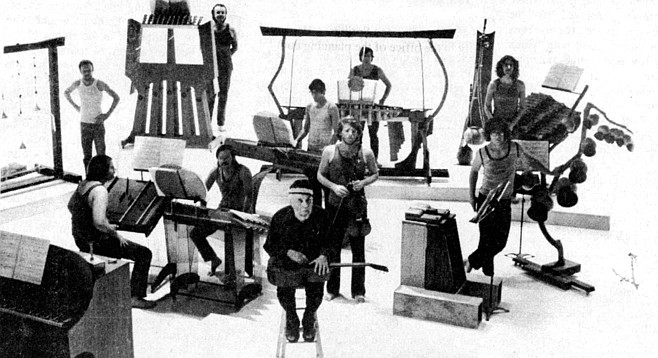
At age twenty-nine Harry Partch gathered up fourteen years of music he had written, based on what he called the “tyranny of the piano” and the twelve-tone scale, and summarily burned it in a big iron stove.
Cowboys, cattle, and time 1.8.81 Gordon Smith
Jim Kemp is the largest cattle rancher in San Diego County, but the few thousand animals he keeps in the East County are only a whisper of the former huge herds. When Kemp’s family first acquired ranch land here in the 1870s, Southern California was still known as the state’s “cow counties.”
Prelude for a young pianist 1.29.81 Jeannette DeWyze
Around age six, Gustavo Romero discovered something that seemed near miraculous: the system of musical notation. “When I found out that all this music [which he had been trying to teach himself] was written, I went crazy!"
The Littlefield Chronicles 11.19.81 Bob Dorn
It probably would require a book to tell why Jacquelyn Littlefield has come to view herself as an alien here in San Diego, how she has managed to become known as “the difficult woman’’ who owns the Spreckels Building with its magnificent but often empty Spreckels Theatre.
Sol Price and the FedMart story 4.1.82 Bob Dorn
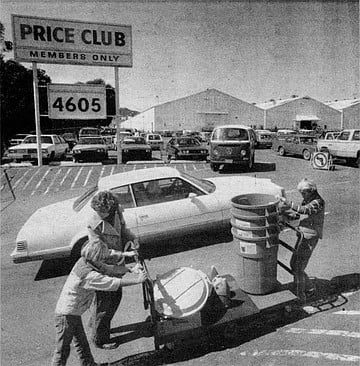
Price:“The thing either wins in the marketplace or it doesn’t. The idea doesn’t need explanation; it’s pretty obvious. Many people can explain it better than I.”
The rise and fall and rise and fall of Warner Hot Springs 4.15.82 Gordon Smith
“Water’s pretty scarce up here, and they’re supposed to build a lot of homes. I don’t know where they’re going to get the water. We [the Los Coyotes tribe] are lots higher [than the expanded resort would be], and the water’s bound to go out. Most of the water here is from springs, and they could dry out.”
Florence Chadwick in and out of the water 6.17.82 Kathryn Phillips
Many years earlier, on her return to San Diego from a trip abroad, Chadwick had been greeted by city officials with a jubilant ticker-tape parade down Broadway, a key to the city. At the age of thirty-one she had conquered the English Channel in world-record time, and had become famous and admired throughout the world.
The muffled roar of Ray Huffman 8.12.82 Gordon Smith
At least 14,000 San Diegans live in apartments built by Ray Huffman. North Park, where Huffman concentrated much of his early building, contains so many of his apartments that the entire area is occasionally referred to as “a monument to Ray Huffman.”
Somewhere between death and the border 9.16.82 Bob Dorn
Anyway, after Punta Prieta we were doing about seventy or eighty. I saw the dust cloud again up ahead only about 200 yards. No sooner had I thought that than I realized he had rolled the truck over. You see, the road is straight, and then all of a sudden he just shoots off to the left in a cloud of dust.
A small room at the end of the hall 10.14.82 Richard Smith
I spent quite a bit of time in my room. To anyone who stays at the Y for more than a couple of days or so, their room must become very important and personal to them. Mine did.
What on earth am I settling for? 12.2.82 Joe Applegate
“Goddamnit,” said Jane one evening about six months ago when I answered the door of our apartment in Golden Hill and found her on the stoop, Jeanne sliding out of her arms and a sack of groceries spilled at her feet. ‘‘Go down and get Julie, she’s screaming in the car.”
The group and other strange birds 12.23.82 Gordon Smith
The call came through to Elizabeth Copper’s home in Coronado on a September evening in 1980. A black-billed cuckoo had been sighted on Point Reyes, a hilly peninsula that juts into the ocean thirty miles north of San Francisco. Copper, one of the most active and experienced birders in the state, knew right away it was an extremely rare event.
Mananimalmananimal 1.27.83 Judith Moore
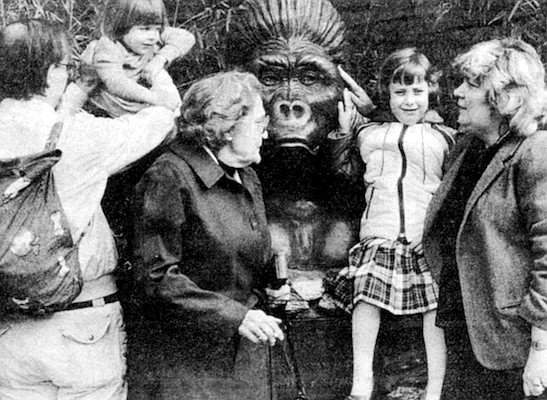
You tell me why, what, keeps my stub-toed Frye boot from kicking, jabbing the open-toed lavender sandals, nylon-encased toes; what stays the hand from grabbing the gray-suit lapels, from turning that wood-laminate table over; what keeps the mouth, tongue from yowling, screaming, howling; what holds a person back from breaking out, breaking up, breaking loose.
Skip Frye is still stoked 4.14.83 Joe Applegate
Forty-one years old this year, Frye is back at Gordon & Smith after a voluntary layoff of four years — "my wilderness years," he calls them — during which his marriage dissolved and he retreated, in reverse of the hermit crab, from a larger shell into a smaller, and into a smaller. He gave up his job, his dwelling, his church, his car, until he was living in a backyard shed in Pacific Beach and riding a bike..
Caliente 7.21.83 Bob Owens
In November of 1960, John Alessio’s forty-one-year-old brother Tony, the track pricemaker, was kidnapped by a gang, at least one of whom had previously charged that the Caliente racetrack had refused to cash a legitimate winning 5-10 ticket worth $87,000. Caliente based their refusal to pay on the claim that the ticket had been altered.
Say, am I anywhere near Good Karma Lane? 10.20.83 Sue Garson
We’ve got twenty-nine Cedar streets, avenues, roads, lanes, and ways; fourteen Evergreens; twenty-eight Elm variations, twelve Eucalyptus variations, eighteen Acacias, fifteen Oaks, and twenty-seven Palms. Because olives were the principal orchard trees in San Diego’s salad days, there are now thirty-six Olive variations.
Notes from a wagon seat 1.12.84 Gordon Smith
Twelve miles south of Highway 78 is a trailer park and campground called the Butterfield Ranch, and a few miles south of that lies the restored Vallecito stage station, now a county park. Route S-2 itself is marked impressively with signs that read “Great Southern Overland Mail Route of 1849." But Remeika assumed the stage trail itself had long since disappeared.
Little computers, big bucks 1.19.84 Jeannette DeWyze
Andy Kay is a man who has a second chance at greatness. Up in Solana Beach he is building little “personal computers’’ called Kaypros, which today rank among the most popular microcomputers in the country and which already have earned Kay millions..
The deadly circle 3.29.84 Neal Matthews
To the north Cunningham and Driscoll spotted the glint of two MiG-21s in afterburner, about four miles away. It had been 22 months since a MiG had been shot down, and few had even been encountered during that time, so with relish Cunningham accelerated to 650 knots and pulled in behind them.
San Diego primeval 4.5.84 Gordon Smith

Ancient volcanoes lie buried beneath the beaches of San Diego. Mountain ranges that once rose across the county have disappeared. A river that flowed here from Sonora, Mexico dried up long ago, when tapirs the size of terriers wandered the county and crocodiles wallowed in marshy lagoons.
Where demons thrive 5.2.84 Steve Sorensen
BLM rangers’ job is to see more than the rest of us and then somehow try to go on believing that the whole world isn’t made up of the human trash they call “dirtbags.” You might think the desert would be a place where you could get away from people like that, the rangers say, and maybe it was, once; but not anymore.
Assault on Montserrat 5.10.84 Thomas K. Arnold
Ralph Frammolino was the first American journalist to arrive on the Caribbean island of Montserrat in search of fugitive financier J. David Dominelli. Frammolino had covered the Dominelli story sporadically for the previous month. But when he awoke on the morning of Thursday, April 19 and read in the Times that the former investment king had fled to Montserrat, he scrambled to the downtown newsroom.
The last vaquero 5.17.84 Neal Matthews
"Like all vaqueros then, my father worked this end or that end of the range. Then he worked for Jim Kelley, who was one of the fellas that found gold in Julian in 1870. When the gold kinda played out, ol’ Jim Kelley took up quite a chunk o' country southwest of Julian."
The devil’s peak 8.2.84 Steve Sorensen
In the summer of 1967, when I first heard about El Picacho del Diablo, I was still young enough to think I was indestructible. I was a smart-assed college student at the time, with more daring than good sense, attempting my first wilderness adventures in the mountains of Utah and on the granite walls of Yosemite Valley.
This is the way it was 10.4.84 Stephen Meyer
There is something eminently civilized about standing downtown at Broadway and Fourth Avenue and knowing who Alonzo Horton was, knowing that when he arrived from San Francisco in 1867 he commented that San Diego Harbor was the finest he’d ever seen — he decided he had never encountered in all his travels a site so perfectly suited to build a city.
Absolutely no preservatives 10.11.84 Jeannette DeWyze
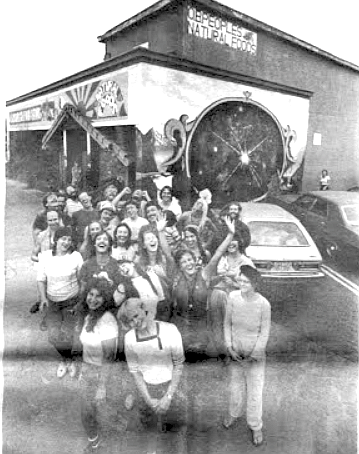
One by one the activists have left; the OB Rag, the OB Free School, the Community School. The Left Bank, once a cauldron of leftist idealism, has been reincarnated as Peninsula Bank. Only the venerable Newport Avenue head shop, the Black, and People’s Food have survived, remnants of an earlier ethos, a style whose time has passed.
Aboard the Blueback 11.29.84 Neal Matthews
The Blueback crew seems to sense the significance of this event. They’re the caretakers of one of only five remaining diesel boats in the U.S. fleet, a boat that in many ways was the link between the technology of World War II and the nuclear navy of today, and they know that in five years their boat, like this night, will only be a fond memory.
The mystery of the Putnam sisters 1.31.85 Judith Moore
“If anyone tells you they knew them, they’re lying,” one longtime San Diegan says, when asked about the late Putnam sisters. The wealthy, reclusive spinsters went to and from their Hillcrest mansion at Fourth Avenue and Walnut Street in a curtain-shrouded limousine. In 1938 the sisters began to lavish San Diego with Old Masters. They donated an El Greco; a Goya; a Van Dyck; a glorious Murillo.
The bloody battle of San Pasqual 3.7.85 Glenn Wallace
When Captain Gillespie and his force rode out of San Diego through the northern end of Mission Valley, they passed a cluster of adobe huts. Watching from inside one of the huts was Andres Pico's sister, who immediately sent word by a rider to Pico, who at the time was ten miles north of town.
Their kind of town 4.11.85 Sue Garson
As you drive through the hairpin turns near Hauser Canyon Mountain, out past Potrero where Highway 94 narrows, your ears begin to pop when the altitude reaches 2350 feet. About five miles southwest of Campo, there's a clearing in the oaks. A simple hand-painted sign's black letters - DOG PATCH U.S.A. - demand recognition.
Around the town in seven years 7.18.85 Paul Warden
Well-dressed men and well-to-do women especially like to talk dirty and tell dirty stories while they're in a taxi. While listening to this guy’s story, the next mistake I make is to miss the off ramp to La Jolla. “I’m sorry but today’s my first day and I’ve got a lot to learn. But my mistake won’t cost you anything. I'll just take a couple dollars off the meter.”
The ultimate fun hog has bailed 8.15.85 Sue Garson
More than a hundred mourners gathered at the one for Seth Johnson, on a Sunday afternoon last March. They came to pay tribute to an outsider who first heard of Windansea from Butch Van Artsdalen when the two met in August of 1969. Although Butch bailed back in '77 when his corroded 38-year-old liver succumbed to years of abuse, Windansea grommies talk about Butch riding the Banzai Pipeline in Hawaii.
A few rounds with the Mongoose 9.19.85 Neal Matthews
In 228 professional bouts between 1936 and 1963, Archie Moore touched 140 men unconscious, a knockout record that many boxing experts believe will never be broken. He won a total of 193 fights and lost only 26. A San Diego resident since 1938, Moore is now probably seventy-two – he has never revealed his true age.
The seven wonders of San Diego 10.24.85 Neal Matthews
Stabbing into the relentless wind of the Carrizo Grade, the boulders line Interstate 8 like a petrified army, inert and mysterious. What crazed general could have placed each enormous stone in its improbable position, balancing precariously on a narrow ridge top, jutting horizontally from a cliff face? Many of the rocks seem to mock natural laws.
The spirit of Steve Ponchetti 11.7.85 Steve Sorensen
When the Franciscans came here, they taught all the people to pray in Spanish. Most of the old people could pray and sing the hymns by heart. Years ago, when everybody traveled by wagon, it was hard to get a priest to come around to the different reservations, so the priests gave the prayer leaders the right to bury people.
San Diego computer anarchists headquartered in quiet Kensington home 11.21.85 Brock N. Meeks
Pirates held a nationwide teletrial of a Newsweek reporter. The sentence handed down was merciless. The reporter’s credit was wiped out when someone got into the TRW credit computer and erased his record. Next he was assaulted by a barrage of “attack- dialers” on his home phone.



So much of identity is memory. There’s experience; maybe we chase it, maybe it just washes over us. But memory is what makes experience stick, what makes an anybody slipping through life into a somebody who has lived. And it’s what makes San Diego more than a sprawling no-place with a beach and a zoo and an excess of sunshine. I work a few steps away from the Reader archives: 260 square feet of wallspace occupied by rows of black cardboard office drawers nestled into a steel framework, each one labeled with a date. The first reads simply: 1972. The first cover feature, “South of Bdwy,” published October 5, 1972, is by John Milton (!) and begins, “The city, only a few years ago, only wanted to expand Horton Plaza. You know Horton Plaza, south of Broadway, across from Westgate Plaza, San Diego’s Hyde Park: Hare Krishna...black-and-white fundamentalists...the pitifully inebriated...” Over the 50 years that followed, the Reader told the San Diego stories that helped to form San Diego’s story. That wall of drawers is more than an archive; it’s a storehouse of memory — the identity of a city, the answer to the question, “What’s San Diego like?” Over the next four weeks, we’ll be running brief excerpts from just a few of those stories, selected by the paper’s founder and owner, Jim Holman. Links to the full pieces are online. — Matthew Lickona
Mood on campus 11.23.72
"I just said I hope Proposition 19 — marijuana — passes."
"Yeah, I do too. But I don't think it stands a chance."
"I'd rather have it win than McGovern."
"Well, I'd rather have it win in California than McGovern, if McGovern's going to lose nationally.... Thing is if Nixon wins, we're all going to need marijuana for the next four years."
Morale seemed so high 12.14.72 Ralph Jackson
A human relations group had been on the Kitty Hawk since the beginning of the cruise, and their rap sessions had been televised all over the ship. A black chief petty officer in Mark’s division had scoffed at the militant blacks and their comments in the television sessions. And when the chief’s black sailors began knotting, braiding their hair, he chewed them out royally..
Seals 4.12.73 Carlos Bey
"We all lived in conclaves, usually in houses in Coronado. Some of us live in the Sharp Mansion. You know, the guy the hospital's named after. He founded KFSD. We used to have the wildest parties. I remember one back in 1968. We sent out 500 invitations, bought kegs and kegs of beer, and 60 chocolate pies. The first six people in the pie-eating contest started to eat their pies but then picked them up and threw them at the crowd.”

This is the elephant’s grave, you know 6.21.73 Connie Bruck
Johnston, who is now 77 years old and has owned this place for close to 50 years, points to a picture taken in 1945. It shows the Hollywood Theater… “During the war, this place was really jumping," reminisces Johnston. “Remember, there was no El Cajon, no National City, no Chula Vista. So when the sailors got off the ships, they all came here."
The whole area was the city dump 8.16.73 Connie Bruck
The doctor tells me that on the economic ladder of Tijuana, San Martin ranks just slightly higher than the poorest, Cartolandia, where houses are made of cardboard; here.
The Body Shop 5.30.74 Connie Bruck
Laura finds several aspects of the Body Shop unusual, and appealing. Dancing and cocktail-waitressing, for one. "These eyes come in and play voyeur watching you dance, but then, when you come off the stage and serve them drinks, they relate to you in a much more human way.”
From bouncing to hooting to playing the road 7.18.74 Lou Curtiss

Tom Waits: "I started with Bobby Dylan songs. I was trying to learn some more tunes, more traditional vein, to be able to sit in at the Heritage in Mission Beach a little better. I was doing Mississippi John Hurt and that sort of thing."
Early years of San Diego rowing 5.8.75 John Martin
Probably the biggest attraction of the Rowing Club is its anachronism. The wooden floors, the knotty pine walls, the wooden lockers next to the gym room. The sign of the sunporch that warns, “Members Must Wear Full-Length Trunks On The Island.” The bare lightbulbs hanging from the ceiling, the comb that hangs on a chain next to the mirror in the locker room.
The poets of San Diego 2.20.75 Michael Davidson
One of the mediating factors between San Diego and an active poetry scene is geographic. New York is an island. San Francisco is a peninsula thrusting up into cold waters, Paris is a city built on a grid of concentric circles. Beyond San Diego is more San Diego... or Los Angeles. The tissue of freeways and boulevards.
Stories of San Diego’s Chinatown 2.6.75 Carlos Bey
When work on the railroads became scarce, many of the San Diego Chinese turned to fishing. There were eight or ten junks that regularly supplied San Diego with fresh fish. The fishermen also sent abalone and dried fish to China and sea shells to Austria and Hungary for the button industry.
Surrender at Milepost 45 10.30.75 Tom Raab
I, a beaten, dejected, frustrated cross-country bicycle rider, was calling it quits. What had begun as a five-week, 2300-mile solo bicycle trip from Pacific Beach to Milwaukee, Wisconsin was ending after only 3-1/2 days at milepost 45 on Arizona’s Interstate 10 — 106 miles west of Phoenix.
Swami’s 4.22.76 Steve Sorensen

To the surfers, the Self-Realization Fellowship temple is a landmark. Its glistening white walls and gold, lotus-blossom archway serve as a marker for their playground below—one of the finest point-breaks in California—“Swami’s.”
Lost in Logan Heights 3.11.76 Steve Esmedina
Tuesday, June 6, 1972. A muggy pre-summer night in San Diego, the kind that sends people scurrying to the beaches for relief. Campfire, tobacco, and marijuana smoke blankets the picnic area of South Mission Beach. Rumbling motors. shouting voices, popping beer lids, and Marvin Gaye’s “What’s Goin' On?” emanate from the beach parking lot.
A kingdom bought and sold 12.9.76 Steve Sorensen

On Third Street in Encinitas, just up the hill from Moonlight Beach, there’s a pair of low-rent triplexes facing each other. They were built at about the same time from flip-flopped blueprints so that one is the mirror image of the other.
A separate peace 2.3.77 Connie Bruck
I’d never spoken to a nun in my life. All I remembered of them from childhood was that my mother always insisted that seeing a lone “sister” was bad luck; and my Catholic friends had learned from their nuns that 1) I was responsible for the killing of Christ, and 2) my soul was lost — which produced in the more zealous of them a faint, nagging itch for my conversion.
How San Diego took care of its Wobblies 3.10.77 David Helvarg
On March 10, 1912, 5000 people gathered in front of the San Diego city jail at Broadway and Front Street to demand an end to the ban on public speaking and better treatment for the free speech prisoners already locked away. The police called in the fire department to disperse the crowd with 150-pound pressure hoses.
Survivors 4.21.77 David Helvarg
"When these reservations were established, it was on land they thought they would never use," Romero says, "so they gave it to the Indians. Now with the development, with the modern roads and transport, these areas have become prime locations.”
War stories 10-20-77 David Helvarg
For Allan Koba and his family it would be more than three years before they’d see their Coronado home again. Like thousands of others, the Kobas were feeling the effects of executive order 9066, the World War II presidential decree that allowed for the internment of 110,000 United States residents, two-thirds of them native-born Americans.
Chairman of the boards 1.19.78 Steve Sorensen

"I started reading about the old-timers — Duke Kahanamoku, Tom Blake, Joe Quigg — and about the huge planks they rode. I guess I realized that something as large as those old boards doesn't just disappear, but I had no idea they were lying around in people's garages.”
When men went under water 3.30.78 Neal Matthews
Bottom Scratchers saw forty-pound halibut and fifteen-pound lobster a few yards off the beach. Modern divers must travel as far as one hundred miles west, to San Clemente Island, to find comparable marine life and water. Until well after WWII, wetsuits were unheard of.
The little world that almost was 4.20.78 Merton Gudette
Katherine Tingley called an International Theosophical convention to Point Loma in 1899. Among those in attendance was Iverson Harris, eighty-eight years old. Harris, now living in Pacific Beach, exudes a restrained, Victorian charm as he recalls his first meeting with Katherine Tingley and his move to Point Loma.
Did somebody call a cab? 5.18.78 Joe Applegate

There is only one Easy Street in San Diego and Pierre Taheri, ace cab driver, doesn't know where it is. He knows the tourist bars and the Navy gates and the Travolator Hotel where the flight crews for National Airlines stay. Taheri knows what it's like to be thrown into his windshield at two in the morning.
Cast a cold eye on heaven 5.11.78 Jeannette DeWyze
The concept of building the world's biggest telescope on Palomar Mountain was born when Alfred Einstein sailed into San Diego Bay in 1931. Officials from the California Institute of Technology drove down from Pasadena to greet the father of relativity, and while here, they eyed the North County mountain for the first time.
Pecking order 5.25.78 Steve Sorensen
Just across the Colorado River from Blythe, less than a mile into Arizona, there’s a big corrugated tin shed at the end of a dusty gravel road. Across the front of this shed and on this hazy spring morning, every reputable cockfighter within three hundred miles of the Colorado has come to pit his seven best birds in the Ehrenberg Derby.
Slow fall from Foxhill 7.6.78 Eleanor Widmer
While Michael Copley was at Fort Ord he heard that his father had been admitted to Scripps Clinic. He called Helen to ask about him, but Helen, he says, was uncooperative. "She said, ‘You can't see your father; he's too sick.' I was very upset because I was his son, so I called Dr. Keeney, and he said, ‘Of course you can see your father.' “
Less is Morey 8.24.78 Gordon Smith

Tom Morey grew up in Laguna Beach, and like a lot of kids on the California coast his main interests were music and surfing. In the early 1960s he and a friend, Carl Pope, collaborated on a custom surfboard design and went into the manufacturing business in Ventura.
The forests below 11.9.78 Manny Ramos
San Diego is the kelp capital of the world. For many, especially local beachgoers, boaters, fishermen, and seaside residents who are all too familiar with the long, brown, rubbery, leafy strands of kelp, this is a somewhat dubious distinction.
River run 10.26.78 Steve Sorensen
I have decided that if there is any true wilderness left in San Diego County it will probably be found on the San Diego River between the Santa Ysabel Valley and the El Capitan Reservoir. I’ve never been there before, and don’t know anyone who has. I prefer it that way, because now I will have the pleasure of finding out for myself what’s out there.
Don’t call me at home 3.8.79 Jeannette DeWyze
Mayor Maureen O'Connor now guards her private life with remarkable jealousy. In the course of preparing this story I wasn’t invited to her home, she wouldn't introduce me to her husband, and she warned me that she would flatly refuse to answer many questions.
Stout hearts and salt water 4.12.79 Steve Sorensen

It was a catastrophe that created the Salton Sea itself, just as it was a series of catastrophes that created and destroyed the ancient lakes that existed where the modem lake now lies. Bounded on the east by the San Andreas Fault, and about forty miles to the west by the San Jacinto Fault, the gaunt desert between has sunk to more than 260 feet below sea level.
The last re-write 9.27.79 Bob Dorn
For years, both local Copley papers were edited and supervised by men like Lt. General V.H. “Brute” Krulak and Captain “Andy” Anderson, fussbudget retired Marine and Navy brass who were capable of issuing orders that stories on anti-war protests refer to the people in the streets as “hooligans.”
Two-dollar tour 10.18.79 Steve Esmedina

When I accepted the invitation to accompany the Penetrators on their six-day junket up the California coast, I realized I could not expect the comforts that might be afforded a Rolling Stone writer. Warnings from loved ones were abundant. My mother urged me to bring ample provisions.
For big kids only 11.1.79 Neal Matthews
“Well, we started out at the Brass Rail with two yellow school-bus loads of OMBAC members,” Daly begins, a rising crest of snickers acknowledging the Brass Rail’s reputation as a gay bar in Hillcrest. They pause to savor the vision of about seventy Old Mission Beach Athletic Club members, mostly former jocks gone to seed, dancing with each other.
Climbing 1.31.80 Amy Chu
We are sitting on Lunch Ledge, a granite shelf five feet wide and ten feet long on the South Face of Tahquitz Rock in the San Jacinto Mountains. We are on one of the almost one hundred routes on what is actually Lily Rock, an outcropping of Tahquitz. A mile away is Suicide Rock, which has another hundred routes.
Fisherman’s knot 2.28.80 Joe Applegate
The camping site was about six hours down Baja’s Highway 1, and we drove it on a Sunday morning in Gregg’s station wagon, a white Volvo. Once we got untangled from the border towns, with nothing but broken clouds and the zebra-colored highway ahead of us, Gregg settled down to sweet country driving.
On the path of the old ones 3.13.80 Gordon Smith

It’s now ten years, almost to the day, since an amateur archaeologist discovered what seemed to be extraordinarily old stone tools in a canyon above Mission Valley, and six years since a chemistry professor from Scripps Institution of Oceanography determined the Del Mar skull to be 48,000 years old.
Reverend Moon wants you 5-8-80 J. Michael Straczynski
As the bus pulled away, I unfolded the slip of paper. Written in flowing, feminine script was the name of her organization, their downtown San Diego street address (Sixth and Beech), and another name, written in much smaller print: Unification Center.
King of the fish mongers 5.15.80 Mark Orwoll
As Vitalich hauls the cargo to Chesapeake Fish Company, near Harbor Drive and Market Street, a menacing sou’wester blows in cold from over the ocean. A man named Joe Engrande ambles over from the People’s Fish market. “Where’s Whitey?” The skipper of a fishing boat points out past Coronado and says,“He’s still out there. Man, he’s tough.”
North to Mira Mesa 7.12.80 Larry Keller
To drive the streets of Mira Mesa for any length of time is to understand fully the meaning of the word monotony. About the only variation in the houses is their height — some are one story and some are two stories. All of them come in earthen tones with dull white faces and brown-shingled roofs. Could they actually be movie props with nothing behind the facades?
The man who bought Cuchama 6.26.80 Ken Winkler
In the early years of this century, Dr. Walter Evans-Wentz, pioneer editor/ translator of The Tibetan Book of the Dead, discovered the spiritual power of this mountain while horseback riding. He bought approximately 3000 acres here. Decades later he claimed to his friends that though he might not be very psychic about people, he was attuned to places.
Death of an island 7.10.80 Gordon Smith
The newcomers hit Guadalupe’s unusual and fragile ecosystem like a bomb. There had never been any land mammals on Guadalupe, so none of the native birds or plants had developed defenses against them. The cats literally tore apart thousands of birds, while the goats chewed the shrubbery down to the roots.
For whom the bell tolled 7.17.80 Sue Garson
Dave Chriss balances a Scotch and water on the arm of a crushed-velvet chair in his Mira Mesa living room. He awaits the arrival of seven other senior citizens who survived the Spanish Civil War and are about to hold the first official meeting of the country’s newest, smallest chapter of the Veterans of the Abraham Lincoln Brigade.
The Partch reverberations 9.25.80 Jeff Smith

At age twenty-nine Harry Partch gathered up fourteen years of music he had written, based on what he called the “tyranny of the piano” and the twelve-tone scale, and summarily burned it in a big iron stove.
Cowboys, cattle, and time 1.8.81 Gordon Smith
Jim Kemp is the largest cattle rancher in San Diego County, but the few thousand animals he keeps in the East County are only a whisper of the former huge herds. When Kemp’s family first acquired ranch land here in the 1870s, Southern California was still known as the state’s “cow counties.”
Prelude for a young pianist 1.29.81 Jeannette DeWyze
Around age six, Gustavo Romero discovered something that seemed near miraculous: the system of musical notation. “When I found out that all this music [which he had been trying to teach himself] was written, I went crazy!"
The Littlefield Chronicles 11.19.81 Bob Dorn
It probably would require a book to tell why Jacquelyn Littlefield has come to view herself as an alien here in San Diego, how she has managed to become known as “the difficult woman’’ who owns the Spreckels Building with its magnificent but often empty Spreckels Theatre.
Sol Price and the FedMart story 4.1.82 Bob Dorn

Price:“The thing either wins in the marketplace or it doesn’t. The idea doesn’t need explanation; it’s pretty obvious. Many people can explain it better than I.”
The rise and fall and rise and fall of Warner Hot Springs 4.15.82 Gordon Smith
“Water’s pretty scarce up here, and they’re supposed to build a lot of homes. I don’t know where they’re going to get the water. We [the Los Coyotes tribe] are lots higher [than the expanded resort would be], and the water’s bound to go out. Most of the water here is from springs, and they could dry out.”
Florence Chadwick in and out of the water 6.17.82 Kathryn Phillips
Many years earlier, on her return to San Diego from a trip abroad, Chadwick had been greeted by city officials with a jubilant ticker-tape parade down Broadway, a key to the city. At the age of thirty-one she had conquered the English Channel in world-record time, and had become famous and admired throughout the world.
The muffled roar of Ray Huffman 8.12.82 Gordon Smith
At least 14,000 San Diegans live in apartments built by Ray Huffman. North Park, where Huffman concentrated much of his early building, contains so many of his apartments that the entire area is occasionally referred to as “a monument to Ray Huffman.”
Somewhere between death and the border 9.16.82 Bob Dorn
Anyway, after Punta Prieta we were doing about seventy or eighty. I saw the dust cloud again up ahead only about 200 yards. No sooner had I thought that than I realized he had rolled the truck over. You see, the road is straight, and then all of a sudden he just shoots off to the left in a cloud of dust.
A small room at the end of the hall 10.14.82 Richard Smith
I spent quite a bit of time in my room. To anyone who stays at the Y for more than a couple of days or so, their room must become very important and personal to them. Mine did.
What on earth am I settling for? 12.2.82 Joe Applegate
“Goddamnit,” said Jane one evening about six months ago when I answered the door of our apartment in Golden Hill and found her on the stoop, Jeanne sliding out of her arms and a sack of groceries spilled at her feet. ‘‘Go down and get Julie, she’s screaming in the car.”
The group and other strange birds 12.23.82 Gordon Smith
The call came through to Elizabeth Copper’s home in Coronado on a September evening in 1980. A black-billed cuckoo had been sighted on Point Reyes, a hilly peninsula that juts into the ocean thirty miles north of San Francisco. Copper, one of the most active and experienced birders in the state, knew right away it was an extremely rare event.
Mananimalmananimal 1.27.83 Judith Moore

You tell me why, what, keeps my stub-toed Frye boot from kicking, jabbing the open-toed lavender sandals, nylon-encased toes; what stays the hand from grabbing the gray-suit lapels, from turning that wood-laminate table over; what keeps the mouth, tongue from yowling, screaming, howling; what holds a person back from breaking out, breaking up, breaking loose.
Skip Frye is still stoked 4.14.83 Joe Applegate
Forty-one years old this year, Frye is back at Gordon & Smith after a voluntary layoff of four years — "my wilderness years," he calls them — during which his marriage dissolved and he retreated, in reverse of the hermit crab, from a larger shell into a smaller, and into a smaller. He gave up his job, his dwelling, his church, his car, until he was living in a backyard shed in Pacific Beach and riding a bike..
Caliente 7.21.83 Bob Owens
In November of 1960, John Alessio’s forty-one-year-old brother Tony, the track pricemaker, was kidnapped by a gang, at least one of whom had previously charged that the Caliente racetrack had refused to cash a legitimate winning 5-10 ticket worth $87,000. Caliente based their refusal to pay on the claim that the ticket had been altered.
Say, am I anywhere near Good Karma Lane? 10.20.83 Sue Garson
We’ve got twenty-nine Cedar streets, avenues, roads, lanes, and ways; fourteen Evergreens; twenty-eight Elm variations, twelve Eucalyptus variations, eighteen Acacias, fifteen Oaks, and twenty-seven Palms. Because olives were the principal orchard trees in San Diego’s salad days, there are now thirty-six Olive variations.
Notes from a wagon seat 1.12.84 Gordon Smith
Twelve miles south of Highway 78 is a trailer park and campground called the Butterfield Ranch, and a few miles south of that lies the restored Vallecito stage station, now a county park. Route S-2 itself is marked impressively with signs that read “Great Southern Overland Mail Route of 1849." But Remeika assumed the stage trail itself had long since disappeared.
Little computers, big bucks 1.19.84 Jeannette DeWyze
Andy Kay is a man who has a second chance at greatness. Up in Solana Beach he is building little “personal computers’’ called Kaypros, which today rank among the most popular microcomputers in the country and which already have earned Kay millions..
The deadly circle 3.29.84 Neal Matthews
To the north Cunningham and Driscoll spotted the glint of two MiG-21s in afterburner, about four miles away. It had been 22 months since a MiG had been shot down, and few had even been encountered during that time, so with relish Cunningham accelerated to 650 knots and pulled in behind them.
San Diego primeval 4.5.84 Gordon Smith

Ancient volcanoes lie buried beneath the beaches of San Diego. Mountain ranges that once rose across the county have disappeared. A river that flowed here from Sonora, Mexico dried up long ago, when tapirs the size of terriers wandered the county and crocodiles wallowed in marshy lagoons.
Where demons thrive 5.2.84 Steve Sorensen
BLM rangers’ job is to see more than the rest of us and then somehow try to go on believing that the whole world isn’t made up of the human trash they call “dirtbags.” You might think the desert would be a place where you could get away from people like that, the rangers say, and maybe it was, once; but not anymore.
Assault on Montserrat 5.10.84 Thomas K. Arnold
Ralph Frammolino was the first American journalist to arrive on the Caribbean island of Montserrat in search of fugitive financier J. David Dominelli. Frammolino had covered the Dominelli story sporadically for the previous month. But when he awoke on the morning of Thursday, April 19 and read in the Times that the former investment king had fled to Montserrat, he scrambled to the downtown newsroom.
The last vaquero 5.17.84 Neal Matthews
"Like all vaqueros then, my father worked this end or that end of the range. Then he worked for Jim Kelley, who was one of the fellas that found gold in Julian in 1870. When the gold kinda played out, ol’ Jim Kelley took up quite a chunk o' country southwest of Julian."
The devil’s peak 8.2.84 Steve Sorensen
In the summer of 1967, when I first heard about El Picacho del Diablo, I was still young enough to think I was indestructible. I was a smart-assed college student at the time, with more daring than good sense, attempting my first wilderness adventures in the mountains of Utah and on the granite walls of Yosemite Valley.
This is the way it was 10.4.84 Stephen Meyer
There is something eminently civilized about standing downtown at Broadway and Fourth Avenue and knowing who Alonzo Horton was, knowing that when he arrived from San Francisco in 1867 he commented that San Diego Harbor was the finest he’d ever seen — he decided he had never encountered in all his travels a site so perfectly suited to build a city.
Absolutely no preservatives 10.11.84 Jeannette DeWyze

One by one the activists have left; the OB Rag, the OB Free School, the Community School. The Left Bank, once a cauldron of leftist idealism, has been reincarnated as Peninsula Bank. Only the venerable Newport Avenue head shop, the Black, and People’s Food have survived, remnants of an earlier ethos, a style whose time has passed.
Aboard the Blueback 11.29.84 Neal Matthews
The Blueback crew seems to sense the significance of this event. They’re the caretakers of one of only five remaining diesel boats in the U.S. fleet, a boat that in many ways was the link between the technology of World War II and the nuclear navy of today, and they know that in five years their boat, like this night, will only be a fond memory.
The mystery of the Putnam sisters 1.31.85 Judith Moore
“If anyone tells you they knew them, they’re lying,” one longtime San Diegan says, when asked about the late Putnam sisters. The wealthy, reclusive spinsters went to and from their Hillcrest mansion at Fourth Avenue and Walnut Street in a curtain-shrouded limousine. In 1938 the sisters began to lavish San Diego with Old Masters. They donated an El Greco; a Goya; a Van Dyck; a glorious Murillo.
The bloody battle of San Pasqual 3.7.85 Glenn Wallace
When Captain Gillespie and his force rode out of San Diego through the northern end of Mission Valley, they passed a cluster of adobe huts. Watching from inside one of the huts was Andres Pico's sister, who immediately sent word by a rider to Pico, who at the time was ten miles north of town.
Their kind of town 4.11.85 Sue Garson
As you drive through the hairpin turns near Hauser Canyon Mountain, out past Potrero where Highway 94 narrows, your ears begin to pop when the altitude reaches 2350 feet. About five miles southwest of Campo, there's a clearing in the oaks. A simple hand-painted sign's black letters - DOG PATCH U.S.A. - demand recognition.
Around the town in seven years 7.18.85 Paul Warden
Well-dressed men and well-to-do women especially like to talk dirty and tell dirty stories while they're in a taxi. While listening to this guy’s story, the next mistake I make is to miss the off ramp to La Jolla. “I’m sorry but today’s my first day and I’ve got a lot to learn. But my mistake won’t cost you anything. I'll just take a couple dollars off the meter.”
The ultimate fun hog has bailed 8.15.85 Sue Garson
More than a hundred mourners gathered at the one for Seth Johnson, on a Sunday afternoon last March. They came to pay tribute to an outsider who first heard of Windansea from Butch Van Artsdalen when the two met in August of 1969. Although Butch bailed back in '77 when his corroded 38-year-old liver succumbed to years of abuse, Windansea grommies talk about Butch riding the Banzai Pipeline in Hawaii.
A few rounds with the Mongoose 9.19.85 Neal Matthews
In 228 professional bouts between 1936 and 1963, Archie Moore touched 140 men unconscious, a knockout record that many boxing experts believe will never be broken. He won a total of 193 fights and lost only 26. A San Diego resident since 1938, Moore is now probably seventy-two – he has never revealed his true age.
The seven wonders of San Diego 10.24.85 Neal Matthews
Stabbing into the relentless wind of the Carrizo Grade, the boulders line Interstate 8 like a petrified army, inert and mysterious. What crazed general could have placed each enormous stone in its improbable position, balancing precariously on a narrow ridge top, jutting horizontally from a cliff face? Many of the rocks seem to mock natural laws.
The spirit of Steve Ponchetti 11.7.85 Steve Sorensen
When the Franciscans came here, they taught all the people to pray in Spanish. Most of the old people could pray and sing the hymns by heart. Years ago, when everybody traveled by wagon, it was hard to get a priest to come around to the different reservations, so the priests gave the prayer leaders the right to bury people.
San Diego computer anarchists headquartered in quiet Kensington home 11.21.85 Brock N. Meeks
Pirates held a nationwide teletrial of a Newsweek reporter. The sentence handed down was merciless. The reporter’s credit was wiped out when someone got into the TRW credit computer and erased his record. Next he was assaulted by a barrage of “attack- dialers” on his home phone.
Comments